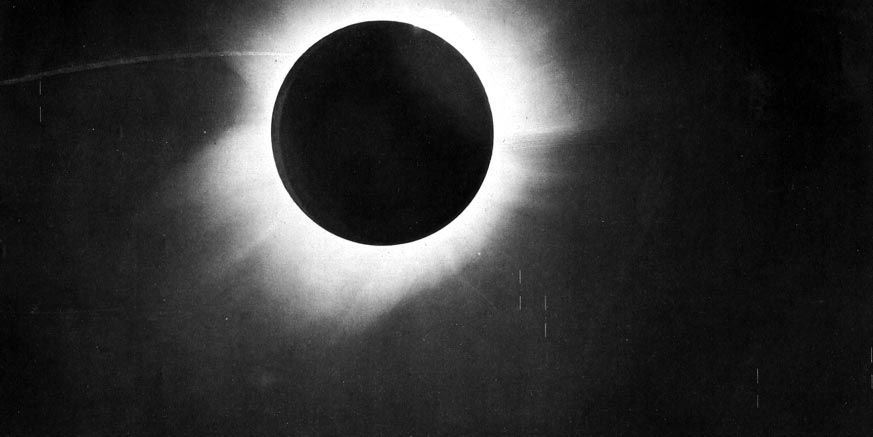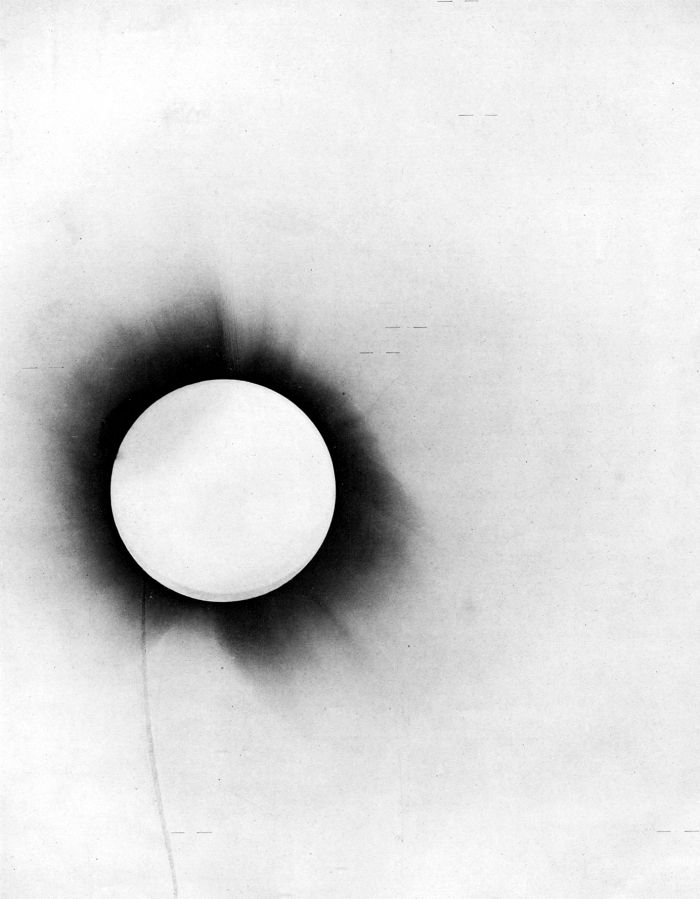
A Relatively Significant Eclipse: May 29, 1919
May 2019 :
Many of us were fortunate to travel to the eclipse of 2017; others here were still thrilled to observe about ¾ of our Sun blocked by the New Moon, and we have another U.S. total eclipse ahead of us, in just 2024.
There will be two occurring just below us, in South America this year and the next, and this year’s falls just two months shy of one a century ago that meant a lot to physicists of the day: It can be said the total eclipse of May 29, 1919 confirmed Einstein’s 1915 theory of relativity.
It had been known that the planet Mercury’s orbit slowly precesses in space over time. Sir Isaac Newton’s laws were able to calculate this motion a little bit, but not enough to perfectly fit the orbit; utilizing Einstein’s general relativity, the numbers were perfect, although there were still skeptics who, not only denied the result, but accused Einstein of fudging his numbers because he knew the result beforehand.
Despite this naysaying, it appears Einstein had actually proposed an alternate test years before. In 1911, he had continued a process first thought in the early 19th century by von Soldner concerning the impact of the Sun’s gravitational field on light. To come to an accurate determination of this change, all that was needed was to temporarily block out the Sun’s light, i.e., to observe the apparent positional change of stars very near the Sun during a total solar eclipse. Attempts were made in preceding years, but it was the eclipse of 1919 that astronomers were finally sure of, and were counting on, the accuracy of the observations.
Two spots to observe this phenomenon were determined: Sobral, Brazil would be visited by Andrew Crommelin and Charles Davidson, and Principe, off the coast of Africa, where Cambridge Observatory Director Arthur Eddington and Edwin Cottingham would set up their instruments.
Today, of course, we are aware that the observations from both sites validated Einstein’s theory, although many did not fully believe the results, and called for further study; however, the press of the day did hail it as the discovery of the century, bringing Einstein’s name into the realm of the commonplace.
Total solar eclipses are only observable here on Earth; therefore, it should be a must for everyone’s bucket list. And, although for most of us the most important aspect of a total solar eclipse is its absolute beauty, they are still often observed in attempts to once again “confirm” the results obtained a century ago.
Most likely, many of us will not be able to travel down to the Southern Hemisphere for either this year’s or the next, but 2024 isn’t really that far away. Let us begin to think about traveling to one of its best observing sites. Whether you’ve seen one or more, or if you’re new to this phenomenon, the word for these, in the words of a foremost eclipse researcher, Fred Espenak, is “Awestruck!”

Image of the 1919 solar eclipse taken from the report of Sir Arthur Eddington on the expedition to verify Einstein's prediction of the bending of light around the sun.



